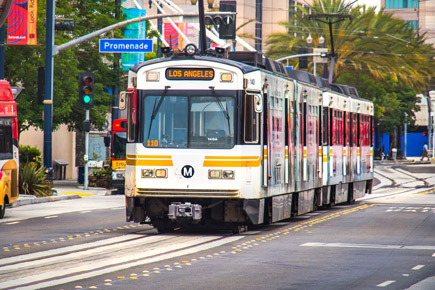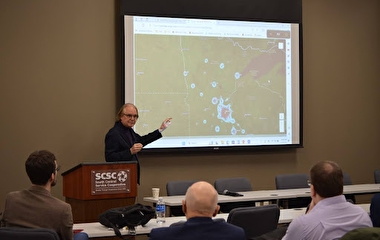In August 2015, the Los Angeles County Metropolitan Transportation Authority (L.A. Metro) embarked on an ambitious experiment. Could a new department with an extraordinary name bring about dramatic changes in transportation policy and innovation to a large government agency in a short period of time?
In the luncheon presentation at CTS’s 2017 Transportation Research Conference on November 2, L.A. Metro’s Chief Innovation Officer Joshua Schank described the creation of the Office of Extraordinary Innovation (OEI), designed to manage public-private partnerships (P3s) and strategic planning for the agency.
“Innovation is often misunderstood,” began Schank. “It’s not really about technology, and we are not superheroes swooping in to save the day. Innovation is about three things: policy, resource allocation, and determination. At a large public agency like ours, you need all three. That’s the only way you’re going to get it done.”
During its first two years, the OEI frequently encountered fierce resistance. “We often hear that there is no time or money to do something, but that’s not true,” said Schank. “You always have time and money—it’s just a matter of determining where you want to allocate your resources.”
To better determine where those resources should be allocated, the OEI was charged with developing the Metro Strategic Plan, which will be released in January 2018 and will clearly define the mission, vision, and goals for the agency. “You can’t be innovative if you don’t know what you are trying to accomplish,” Schank said. “You need a plan that says here are our goals, here are the objective measures we are going to use to see whether we are accomplishing them, and here are the innovative initiatives we are going to use to meet our goals.”
The OEI was also tasked with spearheading a new unsolicited proposal process designed to encourage private-sector ideas for delivering L.A. Metro projects and services. Eleven of these unsolicited proposals have already been brought to the implementation phase, and several “megaproject” proposals have the potential to be game-changers in getting much-needed projects—including a light-rail corridor, express lanes, and a transit pass through a geographical bottleneck—delivered in innovative ways by the private sector much more quickly.
“We’ve told the private sector that we are open to their ideas, and this has brought people from across our departments together to solve problems and think as an organization about how to evaluate ideas by considering costs versus benefits instead of only seeing the obstacles,” Schank said.
According to Schank, the key to the OEI’s success has been thinking of its effort as a bold experiment. “We try something, and if that doesn’t work we try something else. The thing we have that others don’t is permission to do that from our CEO. If you don’t have top-down support saying that innovation is okay, that failure is okay, that we are going to test stuff, then it can’t succeed.”
Through its efforts, the OEI has begun to shift the culture and organizational mindset within L.A. Metro. “Our goal is not to get more people to use transit services, and it is not to make our jobs more efficient,” said Schank. “Our priority has to be serving our customers, giving them more and better options, and getting more people where they are going faster.”



